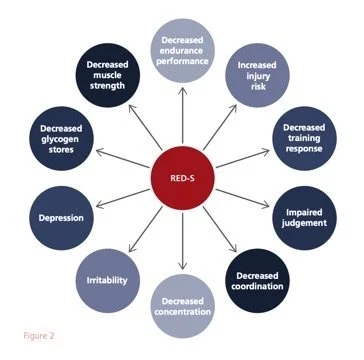If you run…read this
The good news is that female participation in sport is on the increase! YAY! This is brilliant, more women are getting, and more importantly staying active and subsequently reaping the many benefits associated with being physically literate.
Oh, hang on though, don’t get too excited because, despite the increase there is still an imbalance of female specific sports science research! Yep, that’s right, female athletes have not been specifically studied or scientifically investigated because, guess what? their complex bodies have been seen to be, well too complicated to study! Historically, data has been derived and transferred from male rats and male humans to women, with no consideration on how different our physiology is. Sadly, between the years of 2014-2020 only 6% of published sports science articles solely focused on female athletes.
Why is this important or relevant to you, you’re not an “athlete” in fact, you’ve only just got your head around the fact that you are a runner! An athlete…. don’t make me laugh!
However, whether you are an Olympic athlete or a recreational runner, the fundamentals of being a runner are the same, ultimately, we all want to improve our performance and have goals to achieve goals; just because your goal isn’t a gold medal at the Olympics doesn’t mean it’s any less valid.
There is limited robust female athlete specific scientific knowledge on menstrual cycles, nutrition, energy expenditure, pregnancy, post-partum & breast feeding, perimenopause and lifelong running. So, the dilemma I face as a coach is, when presented with these real life every day issues that my athletes face, how can I effectively translate the limited scientific data into practical useable formats to ensure all athlete care is evidence based and practically implemented into real life?
Have you heard of Relative Energy Deficiency in Sport (RED-S)? This syndrome refers to the damage an athlete can do to their physiological functioning when their dietary energy intake is insufficient to support the energy expenditure required for health, function, and daily living once the cost of exercise and sporting activities is considered. Sounds complicated, but basically if you don’t fuel your body with enough calories and nutrients and continue to exercise and train then you are at risk of causing serious impairment to your body.
The potential health consequences of RED-S
Immunological, menstrual function, bone health, endocrine, metabolic, hematological, growth & development, psychological, cardiovascular, gastrointestinal.
The potential effects of RED-S on sport performance
Decreased endurance performance, increased injury risk, decreased training response, impaired judgement, decreased coordination, decreased concentration, irritability, depression, decreased glycogen stores, decreased muscle strength.
Have you stopped reading? Have you dismissed what I’m saying because you still don’t think that this is relevant to you because you still don’t see yourself as an “athlete” who “performs in sport” Read on…
I so often, over many years, see people get caught up in the intensity of their training, who don’t consider themselves as athletes even though they train consistently, they follow a training plan and commit to a significant amount of time in their already busy week to improve times and overall performance.
Repeatedly I hear “I can’t run slower, I can’t miss a session, or a run” and I watch as runners get caught up in the thrill of competition, see the social pressure push to train every day and for every run or workout to exceed the one before.
Time again I witness the much-wanted weight loss, the complements that follow, the running friendships made than enable “healthy and fun competition”; but I also see (predominantly) women eating less, skipping meals, eliminating carbs or sugar, replacing food with shakes, drinking less and all the time running and training harder, faster. I observe the joy of the perceived correlation between weight loss and improved speed and all this with inadequate fueling.
Sadly, and all to frequently, I watch the wheels slowly start to come off, and it is slowly, it doesn’t happen overnight. I listen to tales of exhaustion even after a good night’s sleep, how suddenly there are no more improvements, just bad run after bad run with no energy, of aches, pains and frustrations and niggles that won’t go away, or a cough and/or cold that just won’t shift, or re-occurring infections……I ask after their diet, of eating proper food, of fueling before a long run… and then more often than not, I witness the crash, the burn out, and ultimately the disappointment.
Of course, the screening and diagnosiing of RED-S is challenging, the symptoms can be subtle and most of us don’t have an army of sports specialist nutritionists or sports doctors at hand to guide us back to safety, I certainly know enough that I don’t know enough.
So I circle back to the start of this piece, we have limited research on female specific issues that’s not in the public domain, instead what we have are social media influencers with limited knowledge, we have marketing companies with large pockets encouraging us to buy products to get thin fast and unfortunately, our chosen sport is often judged with an emphasis on how we look e.g., thin = faster.
Furthermore, if we don’t recognise or see that there is a problem, because we only know what we know right? how can we detect or even confront the early signs of RED-S? And early detection is vastly important to maintaining, improving and growing in performance, if we don’t detect, recognise and address what’s going on, what will the long-term health consequences look like? What if they looked like you couldn’t run well into your old age?
“Losing weight to get healthy is backwards, we need to get healthy then we will lose the weight”.


